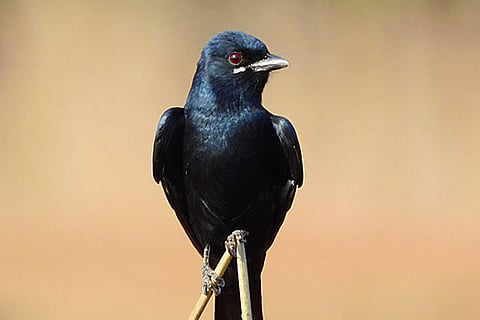

Chennai
Among them, 23-year-old Thamaraikannan weaves sky blue yarn with expert precision. “I come from a family of weavers in Erode, so I grew up around yarns and looms,” he said. Like most homes in the area, his family has a tharikuzhi, or pit loom, set into the floor, where they weave silk saris. But the pandemic has been bad for business so — Thamaraikannan has come to work the cotton here at Oshadi, a sustainable “seed to closet” initiative in Erode, a textile hub in South India.
He’s not alone. Thamaraikannan says there has been a mass exodus from cottage industry operations to Erode’s commercial textile mills and tanneries. Home weavers, who are mostly older women, just aren’t earning enough to get by.
Nishanth Chopra, the 26-year-old entrepreneur behind Oshadi, grew up in Erode, “around textiles, leather and spices.” When he started his women’s wear brand in 2016, he began to question how the industry treated both its artisans and the environment. Not only are Indian textile workers frequently underpaid, but cotton farming in India consumes huge volumes of water, and fields given over to monoculture leach nutrients from the soil. Chemical dyes, meanwhile, pollute rivers and groundwater. Moreover, in India, though only 5% of cultivable land is under cotton, the segment makes up 55% of the country’s expenditure on agricultural pesticides. So, Chopra began to re-examine the entire value chain, one step at a time. Initially, he worked with a cooperative of handloom weavers, but discovered that less than half of what he paid for the fabric was going to the weavers.
“I had to find other ways to pay the weavers a fair wage,” he said. So, he began working with the weavers directly and supported exceptional artisans by investing in their looms. The next step was getting his dyers to switch to natural dyes, which he sourced and provided to dyers himself, with a guarantee that he would buy back the yarn at a premium price.
Working back to the source of the cotton itself, Oshadi helps farms to move away from mono-cropping and to regenerative, organic farming, which Chopra says is simply a return to how farming was done traditionally in India.
One of his partner farms is at Kaanchi Kovil, not far from where the cotton it produces will be woven in Erode. Green grams and urad dal are planted between cotton plants to enrich the soil. Castor, meanwhile, is planted at the borders. “We use these as a pest warning system,” farm director Sivashankar explains. “Usually, the cotton pests attack the castor leaves first. It indicates that it’s time for our organic pesticides.”
Tamil Selvi, an experienced farmer who is receiving training from Oshadi to switch to organic methods, says a “3G” formula of ginger, garlic and green chilli extracts keeps off the mealy bugs and other pests, while inter-cropping with spicy or bitter crops like neem, erukku (crown flower in English) or adhatoda deters livestock from grazing where they shouldn’t.
Ananthoo is an entrepreneur who had been in the organic food business in South India for some time when the alarming suicide rate among cotton farmers motivated him to set up an organic cotton clothing brand Tula in 2014.
Like Oshadi, Tula supports farmers to switch to organic native cotton, which Ananthoo says they have found more resilient to changing climatic conditions, surviving both droughts and unseasonal rains. “We are now creating close to 100 livelihoods in our sustainable value chain, from seeds to fabric,” Ananthoo said.
This article was provided by Deutsche Welle
Visit news.dtnext.in to explore our interactive epaper!
Download the DT Next app for more exciting features!
Click here for iOS
Click here for Android